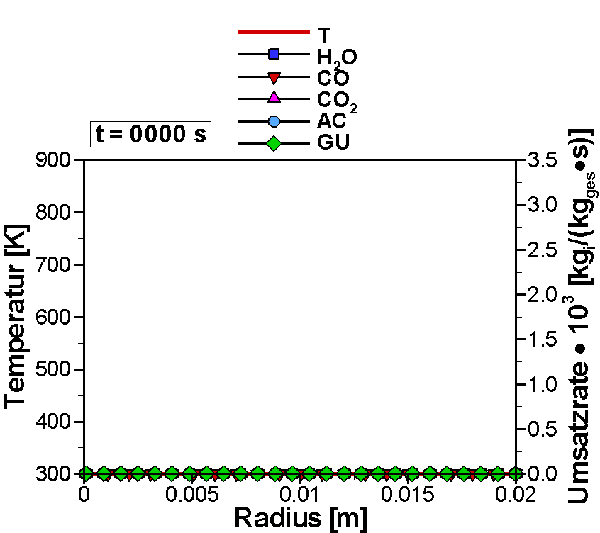Pyrolysis and Combustion of Wood
Example: Conversion of a single wood partricle
Understanding the mechanisms and processes involved in the combustion of wood particles is of key importance in the development of more efficient combustion systems. The process of biomass particle combustion is extremely complex. The Program PACO (PArticle COnversion) was developed which is able to model the heat transfer and the conversion (drying, pyrolysis, combustion) of single biomass particles. The code can be used a stand-alone tool or can be implemented into CFD-code to model the conversion in fluidised or fixed beds

The animation shows the drying and pyrolysis of a single cylindrical particle of humid beech wood (diameter = 4 cm). The bend in the curve of the temperature (left ordinate) indicates the local position of the evaporation front. The curves for the conversion rate of some products (right ordinate, AC = acetic acide, GU = guaiacol) show that the maximum of the distribution is getting smaller and the width is getting larger in time for every species.

The picture shows the comparison between calculation and measurement for different huimidities.
References
Hettel, M., Seidelt, S., Haußmann, M., Bockhorn H., (2011). Modellierung der Holzverbrennung: Pyrolysekinetik und Partikelmodell, 25. Deutscher Flammentag, VDI-Berichte 1890, Verein Deutscher Ingenieure (ed.), p. 87-93.
